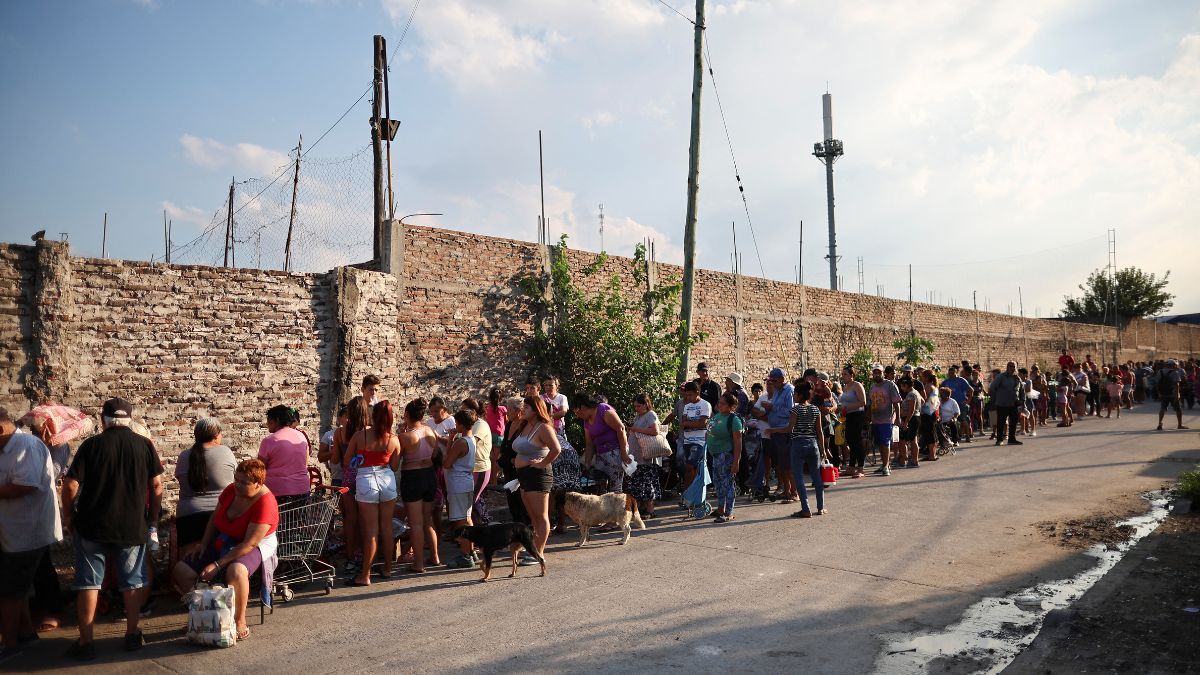Argentina has seen a dramatic increase in poverty, with over half the population now living below the poverty line.
The South American nation’s economic and social crises have deepened under the first six months of its President Javier Milei, with austerity measures and other tough policies driving widespread hardship.
According to official data released by Argentina’s INDEC statistics agency, the poverty rate surged to 52.9 per cent in the first half of 2024, marking a sharp increase from 41.7 per cent at the end of 2023.
This staggering figure means that approximately 15.7 million Argentines now live in poverty, with nearly 20 per cent of the population classified as indigent.
This jump in poverty is the highest Argentina has experienced since 2003, a period when the country was reeling from a devastating economic collapse, foreign debt default, and currency devaluation. The number of people living in extreme poverty increased by 3 million during the first six months of 2024 alone
“The government inherited a disastrous situation. They left us on the verge of becoming a country where nearly all of its inhabitants are poor,” said presidential spokesperson Manuel Adorni in a press conference.
What is behind Argentina’s poverty crisis?
Javier Milei, who came into power as a self-described “anarcho-capitalist,” has implemented drastic austerity policies aimed at eliminating the budget deficit and curbing the country’s runaway inflation.
His government has slashed public spending, devalued the peso by 54 per cent, and reduced subsidies on essential services such as energy, fuel, and transportation. As a result, thousands of public employees have lost their jobs, and numerous public works projects have been halted.
Milei’s policies have been well-received by markets, investors, and the International Monetary Fund (IMF) to which Argentina owes $43 billion, as they have helped to stabilise the country’s fiscal situation. For the first time in nearly 12 years, Argentina reported a monthly budget surplus in January 2024, with a projected fiscal surplus of 1.3 per cent of annual GDP for 2025.
However, these fiscal gains have come at a significant human cost. “Any level of poverty is horrendous,” said Adorni. “We are doing everything, everything so that this situation changes.”
Despite these claims, economists and social observers warn that the short-term impact of these policies has pushed the country deeper into recession, reducing the purchasing power of ordinary citizens.
How is Argentina’s inflation rate faring under Milei?
One of the central pillars of Milei’s economic strategy has been to bring down Argentina’s crippling inflation. Upon assuming office in December 2023, inflation was running at 25.5 per cent monthly, contributing to an annual inflation rate of nearly 300 per cent in early 2024.
In recent months, however, the government’s fiscal tightening has reduced monthly inflation to around 4.2 per cent, with projections aiming for 122.9 per cent by the end of 2024. Despite this reduction, Argentina still ranks among the countries with the highest inflation rates in the world, currently exceeding 230 per cent annually.
“Inflation must be defeated before we can fight poverty,” Adorni stated. The government argues that curbing inflation is the key to unlocking economic growth, which will eventually reverse the rising poverty trend.
Nevertheless, inflation has become less of an immediate concern for many Argentines, who are now more worried about job losses and their ability to afford basic necessities.
How has the public reacted to the crisis?
Milei’s policies, although successful in addressing some of Argentina’s macroeconomic issues, have triggered significant unrest.
Throughout 2024, thousands of citizens have taken to the streets in protest, particularly opposing the slashing of welfare programs, layoffs of public employees, and reduced support for essential services like soup kitchens.
“A solution is needed that balances growth with distribution. Only then can we reverse this trend of increasing poverty,” Santiago Coy, a sociologist at the University of Buenos Aires told AFP.
The Catholic University of Argentina’s Observatory reported that the poverty rate had peaked at 55.5 per cent in the first quarter of 2024 before slightly improving to 49.4 per cent in the second quarter. “If you look at the whole story, it shows a deterioration in the first quarter. That situation has since started to ease,” Reuters quoted Agustin Salvia, director of the Observatory.
Despite this, Milei’s popularity is showing signs of waning. Polls in September 2024 revealed a 15 per cent drop in public support, with many Argentines growing frustrated with the pace of recovery.
Is there a solution in the future for Argentina?
The months ahead will be crucial for Argentina’s future. Milei’s administration remains committed to its path of fiscal discipline, but the balancing act between addressing inflation and providing relief to the poorest segments of society is delicate.
While Milei’s government has promised further reforms, including the continuation of cutting subsidies and downsizing government programs, opposition from both the public and within the Argentine Congress poses significant challenges.
“The best way to fight poverty is, first and foremost, to fight inflation,” said Adorni, though economists caution that sustained reductions in inflation may take time to translate into economic recovery for the majority of Argentines.
Meanwhile, the call for increased spending on pensions, wages, and public works is growing louder, making the next steps for the government fraught with difficulty.
With inputs from agencies
)